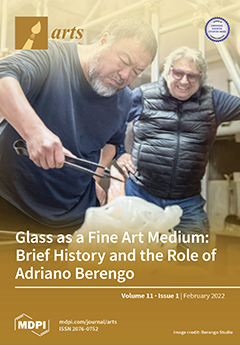During the Renaissance and Mannerist periods, in most European countries the fashion for decorating walls with sgraffiti covered a large part of continent, from Portugal to Romania, and from Central Italy to the German countries and Poland. Its popularity in the middle part
[...] Read more.
During the Renaissance and Mannerist periods, in most European countries the fashion for decorating walls with sgraffiti covered a large part of continent, from Portugal to Romania, and from Central Italy to the German countries and Poland. Its popularity in the middle part of Europe peaked in the 16th and 17th centuries. In many regions, sgraffito was the dominant method of decorating buildings. Sgraffito styles were differentiated by design, artistic level, local conditions and investor preferences. In many regions north of the Alps, sgraffito decorations were, on the one hand, a frequently used method of modernizing medieval buildings, and, on the other, a form of expressing views, often religious ones. Everywhere, however, they expressed supranational belonging to the world of a post-medieval, revival community. It was no different in Silesia, where the sgraffiti madness arrived, thanks to artists who came from the northern regions of Italy around 1540 and settled down until the middle of the next century. The research carried out by the author has proven that, for Silesia, sgraffito was an iconic sign of the architecture of that period. In this region, then belonging to the Habsburg Monarchy, sgraffito decorations covered a wide variety of architectural objects, from barns, walls, and gates to tenement houses, manors, castles, and churches. In the case of the latter, research has shown that temples in Gothic style are heavily decorated with sgraffiti, which should be considered a distinctive feature when compared to other regions. At the same time, it was found that the vast majority of them appeared in forms and themes known to us from other countries covered by the sgraffito fashion. The frame composition made in this technique and, most probably modeled directly on the template by S. Serlia (Tutte L’opere d’Architettura et Prospettiva) from 1619, should be considered as the Silesian contribution to the sgraffito heritage as well as oval bossages. While studying Silesian sgraffito, some local technological differences were also noticed. With the advent of the Baroque period, a large part of the sgraffito decoration was covered (and thus preserved) with a new, baroque decorative costume. We still discover them in the present while carrying out conservation works (sometimes multiple) on historic buildings. Many others, those constantly on display, have been restored to preserve their original shape, or have been reconstructed. Various and simultaneously modernized methods are used to implement these works. Their correct selection depends on in-depth knowledge of sgraffito (historical, artistic, technological and technical) and their regional specificity. It also depends on the constant exchange of experiences between all those dealing with sgraffito heritage.
Full article




